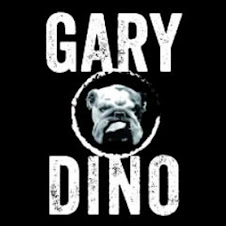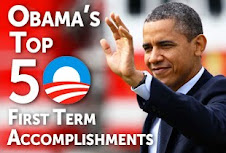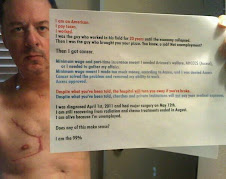By: Jeff Cox
CNBC.com Senior Writer
CNBC.com Senior Writer
The
U.S. economy created just 80,000 jobs in June and the unemployment rate
held steady at 8.2 percent, reflecting continued slow growth in the
economy with the presidential election just four months away.
 |
Stan Hoda | AFP | Getty Images
|
The
Bureau of Labor Statistics said private payrolls increased 84,000,
while the government lost 4,000 jobs. Economists expected job growth of
about 100,000 and the unemployment rate to be unchanged, though many had
increased their forecasts based on some recent indicators.
With
yet another month of weak employment growth, the second quarter marks
the worst three-month period in two years. The period averaged just
75,000 per month, against 226,000 in the first quarter, which benefited
from an unusually mild winter.
May's
weak initial 69,000 report was revised upward to 77,000, which made the
June growth essentially the same. The April number was revised lower,
from 77,000 to 68,000.
"What
a disappointing number," said Jeff Savage, regional chief investment
officer for Wells Fargo Private Bank. "This was kind of disastrous.
We're not even keeping up with demographics at this point. This is not
going to be liked in the markets."
(Catch the Twitter Buzz on this story here)
(Catch the Twitter Buzz on this story here)
The stock market,
where futures had been essentially flat before the jobs number was
released at 8:30 am ET, fell sharply, though that disappointment could
be tempered by hopes of more stimulus from Washington.
"QE3
will be back on the table," Savage said in reference to the Federal
Reserve's quantitative easing program. "It will certainly get more
serious discussion now. Those who want the Fed to get more involved will
have a lot of ammunition off this particular report."
There
were a few bright spots: The overall work week edged higher by 0.1 hour
to 34.5 hours and average hourly earnings grew 6 cents to $23.50. Also,
one of the surveys the government uses to compute the number showed
128,000 more Americans with jobs.
The birth-death model,
which approximates the amount of jobs gained through new businesses
created too recently to be counted in the formal survey, added 124,000
positions, meaning that without the estimation the total count would
have been a loss of 44,000.
"There
is little hope of an acceleration in the pace of job growth any time
soon," said Kathy Bostjancic, director of macroeconomic analysis for The
Conference Board. "These conditions are likely to persist at least
through the summer and possibly longer."
 |
Manufacturing saw 11,000 more jobs, though the bulk of gains continued to come from services, which increased by 67,000.
But
it was an otherwise dismal report that will up the stakes in the race
between President Obama and Republican challenger Mitt Romney.
"We now have 28 months in a row of private sector job growth," Alan Krueger, chairman of the president's Council of Economic Advisors, told CNBC's "Squawk on the Street." "That's moving in the right direction, but we'd like to have faster job growth."
Krueger
passed blame to Congress, which he said could have helped fix the
problem by passing all the measures Obama proposed for job creation last
year.
The details drew an unflattering picture of the American economic picture.
"There's
a lot of misery in America today, and these numbers understate what
Americans are feeling — the amount of pain that is occurring in
middle-class America," Romney said during a campaign stop.
A
measure of unemployment that includes discouraged workers ticked higher
to 14.9 percent, its highest level since February, while the labor
force participation rate stayed near a 30-year low at 63.8 percent.
Unemployment
for blacks surged to 14.4 percent — the highest level of 2012 and up
from 13.6 percent in May — while the 11.0 percent rate for Latinos was
unchanged over May but also at a high for the year.
Long-term
unemployment, or those without jobs for 27 or more weeks, edged lower
to 5.37 million, though the average duration of joblessness rose to 39.9
weeks, the highest since February.
Employment gains also came from professional and business services (47,000), temporary help (25,000) and health care (13,000).
The unemployment rate is the most closely watched indicator as to whether the Federal Reserve will step in with additional monetary easing.
Recent
economic indicators have painted a fairly gloomy picture, with
Institute of Supply Management numbers indicating a contraction, though
factory orders have jumped and Thursday's ADP private payrolls report
was better than expected.
Last
month's anemic jobs growth and the rise of the unemployment rate to 8.2
percent sent off a wave of speculation that the central bank would
initiate a third round of quantitative easing
![[cnbc explains]](http://media.cnbc.com/i/CNBC/Sections/News_And_Analysis/_News/_CNBC_EXPLAINS/_IMAGES/CNBC_explains_icon1.gif) .
.
The program entails the Fed
![[cnbc explains]](http://media.cnbc.com/i/CNBC/Sections/News_And_Analysis/_News/_CNBC_EXPLAINS/_IMAGES/CNBC_explains_icon1.gif) buying Treasurys and other debt in an effort to
provide liquidity, drive down interest rates and boost risk assets like
stocks. At its meeting last month, the Fed decided to extend its
Operation Twist program, in which it buys longer-dated securities and
sells an equal amount of shorter-term debt.
buying Treasurys and other debt in an effort to
provide liquidity, drive down interest rates and boost risk assets like
stocks. At its meeting last month, the Fed decided to extend its
Operation Twist program, in which it buys longer-dated securities and
sells an equal amount of shorter-term debt.
That differs from QE in that it does not expand the Fed's $2.8 trillion balance sheet.
With
economic growth mired at 1.9 percent and possibly heading lower through
the year, the pressure for more stimulus could build, despite
congressional opposition.
Washington
is under pressure to avoid the fiscal cliff — a term coined by Fed
Chairman Ben Bernanke to describe the series of tax increases and
spending cuts that will take place should Congress fail to achieve
deficit-reduction goals by the end of the year.
Among
the provisions involved are emergency unemployment benefits, which
allow the jobless to collect 99 weeks of unemployment. Those who lose
jobs in July will be covered only by state unemployment compensation,
which runs to 26 weeks.
"The
economy is stuck with slow job growth and high unemployment. It
desperately needs a boost to get out of this ditch," Christine Owens,
executive director of the National Employment Law Project, said in a
statement.
© 2012 CNBC.com




























No comments:
Post a Comment